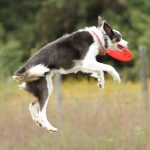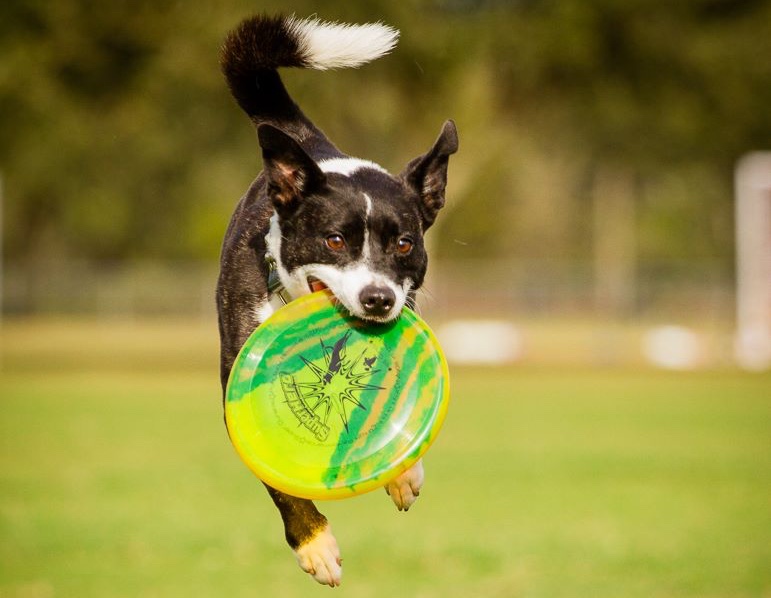
Pawsitive Vybe S2E2 – Right on Target!
Hey! you see the Home menu up there on the top left? Go Mouse over it and tell me what color it is…
Hey! = Attention Unsolicited eye contact or Attention is a great way to hook up with a dog. If you have something the dog wants he should give eye contact in order to get access to... More
Unsolicited eye contact or Attention is a great way to hook up with a dog. If you have something the dog wants he should give eye contact in order to get access to... More
You see that there? = Targeting
Go mouse over = Work
Attention and Targeting are required skills for any cooperative work. Attention, unsolicited eye contact, hooks us up and Targeting enables us to get into and maintain the working position… Hand targeting, object targeting, foot targeting, or even body targets…
Pawsitive Vybe is a weekly 1/2 hour dog training & lifestyle webseries on YouTube that is seeking wider distribution and production support. It is self produced by the Ron Watson of Pawsitive Vybe. If you dig it, share it, it’s free.
targeting is identification, movement towards and/or touching, a target before any reinforcement is presented. targeting is honest work.
0:13 – Zig Zag A Zig Zag is a series of catches in smooth succession that forces the dog to move back and forth across the field. Usually performed at a distance of 8-20 yards, the Zig... More with Loot
A Zig Zag is a series of catches in smooth succession that forces the dog to move back and forth across the field. Usually performed at a distance of 8-20 yards, the Zig... More with Loot
1:20 – Alert with Parkour
3:16 – Show Intro
4:32 – Your Questions
6:43 – Introduction to Hand Targeting with Lil
8:37 – Upping the Ante on the 1 Footed Footstall
11:04 – Shout Out to Show Backers
12:22 – Switching from Hand Target to Objects
15:14 – Freeshaped Multiple Target Targeting with LaVerne
17:19 – 1 Footed Foot Stall A Stall has the dog leaping up and chilling out on the handler’s back. Stalls are great for showmanship and for presenting a dog to the crowd. They create a dramatic or emotive... More Reloaded
A Stall has the dog leaping up and chilling out on the handler’s back. Stalls are great for showmanship and for presenting a dog to the crowd. They create a dramatic or emotive... More Reloaded
19:48 – ShapingShaping is a learning technique where successive approximation and a Positive Marker are used to teach behaviors and communicate concepts. Successive approximation essentially means continually closer to the target behavior. So Shaping is... More an Object Target with Flo
21:37 – Generalizing the Alert Behavior with Parkour
23:16 – TRY THIS – Freeshaped Multiple Target Targeting
24:44 – Target Stick Introduction with Flo
27:15 – Closing Cuts
Leverage Concepts
Now The Now Phase is an integral part of the Play Cycle in the Play+ training philosophy. It embodies the current, immediate interaction between the handler and the dog, anchoring them in the present... More, you might think all of this is overkill,”Like why would I ever need to know this stuff let alone teach my dog about it?”
The Now Phase is an integral part of the Play Cycle in the Play+ training philosophy. It embodies the current, immediate interaction between the handler and the dog, anchoring them in the present... More, you might think all of this is overkill,”Like why would I ever need to know this stuff let alone teach my dog about it?”
The thing is these concepts are in operation whether you want them to be or not. Might as well try to use them to your advantage, right?
Walking around with your dog, asking your dog to get into the car or their crate, trying to move them into the other room, wanting them to go get a toy? Targeting is in effect.
If you don’t have strong targeting skills these common place simple exercises can cause frustration and undue stress in your relationship. Strong, well generalized Targeting skills foster a conceptual understanding of the Targeting behavior, making it part of your dog’s behavioral vocabulary. They will use this concept as a tool to problem solve.
Combine Targeting with the Attention and Dismissal If a dog is dismissed, it means the handler is "off limits". Dismissal does not mean the dog has to leave, just that the handler is not available. Dismissal is a valuable drive... More concepts and you have a toolbox for problem solving. Work with these tools well and you create a desire to problem solve for both the dog and handler. We add a few more concepts and you have all the tools to make a cool dog.
If a dog is dismissed, it means the handler is "off limits". Dismissal does not mean the dog has to leave, just that the handler is not available. Dismissal is a valuable drive... More concepts and you have a toolbox for problem solving. Work with these tools well and you create a desire to problem solve for both the dog and handler. We add a few more concepts and you have all the tools to make a cool dog.
Manufacture the Approach and Maintain Flow
 Tossing cookies is often necessary in dog training. Usually understood as Reward Placement or Rewarding for PositionIn the Play+ philosophy, "Position" is the final stage within the "Next" phase of a Cycle of Play. It acts as a pivotal link between the "Next" phase and a new "Now" phase. More, the placement of reinforcement has great bearing on behavior.
Tossing cookies is often necessary in dog training. Usually understood as Reward Placement or Rewarding for PositionIn the Play+ philosophy, "Position" is the final stage within the "Next" phase of a Cycle of Play. It acts as a pivotal link between the "Next" phase and a new "Now" phase. More, the placement of reinforcement has great bearing on behavior.
If you always pay from your hand, the dog will always be close to the handler. If you pay away from the handler by tossing cookies frequently, the dog will work at whatever distance and location that the cookies are happening in.
When we are working hand targeting and object targeting, (dog touches hand or object with nose) where we toss the cookie can increase or decrease the likelihood of a successful target, and will create movement. You can use Reward PlacementThe dog puts his face where the Cookie or the disc happens. Where you put the reward matters. Reward Placement is huge in disc dog freestyle. Your dog’s face will always wind up... More to create an angle of approach to or from the handler or to get the dog moving and control the pace of the session.
Dismiss While High
When working your dog, less is totally more. Two to three 2 minute sessions (3-5min MAX!) per day plus your daily skills will be plenty to install these concepts.
Dismiss early and Dismiss often. You want to quit on High, when your dog is totally stoked about the game,”OMG, OMG, OMG!!! This is AWESOME!!!” That’s the time you want to Dismiss,”Go Do Dog Stuff…”
This is especially important with nervous, hard to motivate, or distracted dogs. You might dismiss 2 or 3 times in your 3-5 minutes of work. You might dismiss after 20 seconds. Dismiss while the dog is high.
Be cool on dismissal. Resolve the game in a pleasant way. “Great job, big man! Go do dog stuff…” or “… alright, great work… go do dog stuff…” Be very careful about killing the game in a curt, negative fashion. Nobody wants to feel as if they’re talking to the hand.
Generalize, Generalize, Generalize
Work on all of these targets and generalize the heck out of them. The more things your dog touches, the more times your dog has to figure out what it is that you are looking for them to target, the better they get at solving targeting problems.
As you generalize, you repeat the learning process over and over. Pretty soon the dog knows, by the structure of reinforcement alone – that re-triggering of the learning process – the dog knows that this is a Targeting exercise. The only thing left is to figure out where the Target is and that’s easy!
Generalize the Skill not the Cued Skill
Resist the urge to start cuing the behavior. You want to teach the behavior first and generalize it before you name it. Otherwise you will be creating a specific and limited understanding of your cue. (Think Cue, Not Command)
It is far more simple and successful to generalize a behavior instead of generalizing the cued behavior. Generalizing the cued behavior pretty much guarantees that you will experience a significant percentage of failure on your cue at the foundational aspects of the skill. When you have generalized the skill and can bet $100 that it will happen right now, this moment, with no delay, then you can drop the cue on it.
If you wait until the skill is totally understood, generalized, and valued and you drop a cue on it, it’s entirely possible to have 100% success on your cued behavior from the get go.
Discussion in Comments Below
I’ll do my best to answer any and all questions on the show, Targeting or Attention/Dismissal in the comments below. Don’t be shy, the only stupid questions are the ones not asked.









Responses